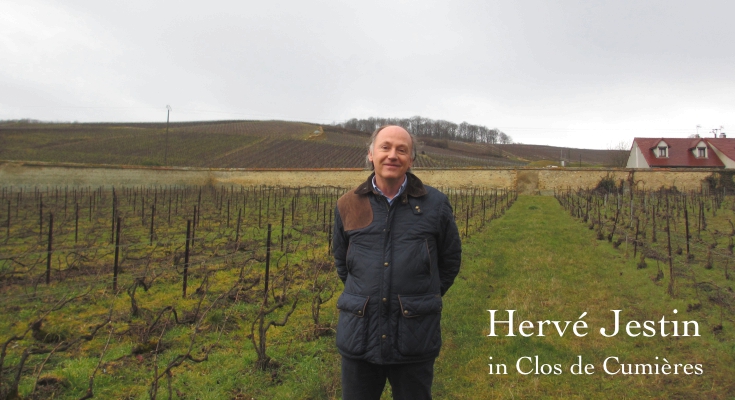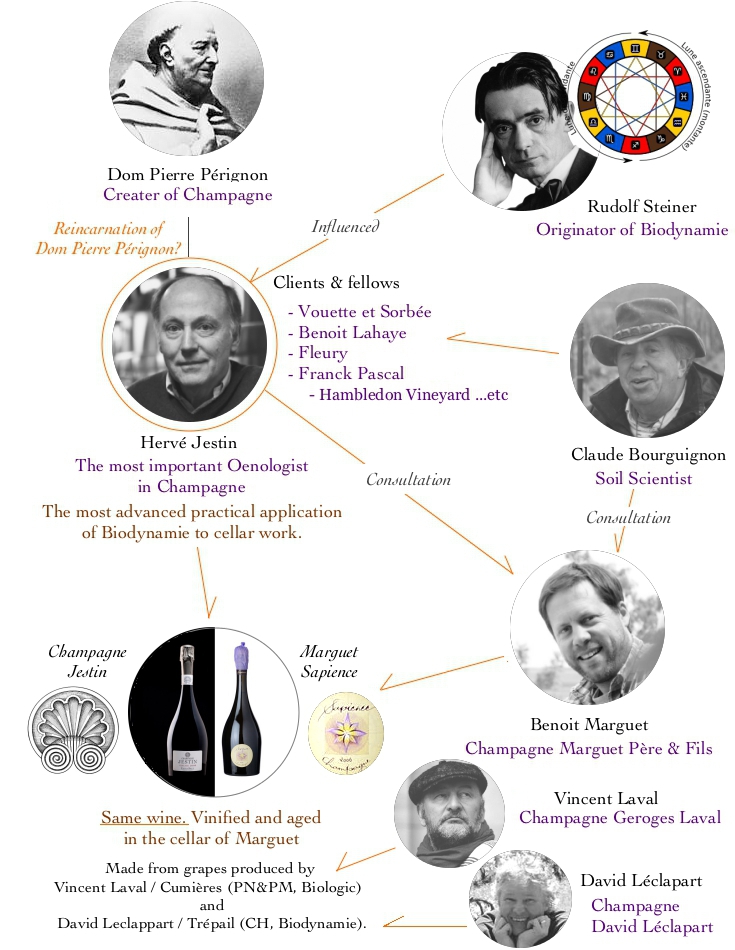
In the early 2010s, we forecasted that Champagne would be the most prominent region that would dramatically improve its quality over the next ten years. The revolution has been underway since the mid-2000s, and many Champagne producers, influenced by Hervé Jestin, have captivated numerous enthusiasts.
In 2013, a crucial and monumental cuvée called "Champagne Jestin" was released. Champagne Jestin 2006 represented a significant achievement in Hervé Jestin's winemaking, serving as both a starting point for the further revolution and a pivotal moment in Champagne's history. To appreciate this Champagne was to reflect on the past ten years, and to declare oneself a witness to the New Era of Champagne for the next decade.
Time has passed, and now it is 2024. As we predicted, the remarkable progress of Champagne over the past decade has led to the emergence of many outstanding producers. Hervé Jestin has consistently produced Champagne at a completely different level. Then, finally, Hervé Jestin's Clos de Cumières 2012 has arrived in Hong Kong.
"Earth has changed very rapidly since 2006, and with it, the approach to winemaking has also evolved. Although it is difficult to explain in general terms, it seems that it is much easier for Asians to understand my approach. My idea is that every vintage serves as a mirror reflecting the changes in humanity."
(by Hervé Jestin)
|
|
How to appreciate Champagne Jestin
(by Hervé Jestin)
This Champagne is a gastronomic Champagne rather than an aperitif Champagne. It is also a "philosophical Champagne" that should be tasted in a very quiet space with a positive mindset. It brings a sense of peace to the consumer. To me, the idea is to taste it while feeling the emotions evoked by the wine.
The optimal temperature for serving is between 13 and 14 °C. It is important to avoid using an ice bucket, as it can be too harsh. The Champagne needs several minutes (15 minutes or more) to open up. Additionally, you should be careful not to shock the glass after pouring.
It is also interesting to taste while standing in different orientations (North, South, East, and West), especially in the westward direction (toward Champagne). If you have the opportunity to taste the Champagne on a fruit or flower day, it is even better.

About this cuvée and Hervé Jestin
A monumental cuvée called "Champagne Jestin" has been released. This represents a significant achievement in Hervé Jestin's winemaking, serving as both a starting point for the further revolution and a pivotal point in Champagne's history. To appreciate this Champagne is to reflect on the past ten years and to declare oneself a witness to the New Era of Champagne for the next decade.
The grapes are sourced from Hervé Jestin's associates, Vincent Laval (Cumières, PN & PM, organic) and David Léclapart (Trépail, Chardonnay, biodynamic). The wine was vinified in the cellar of Marguet. This is the first certified organic prestige Champagne blended from across the region.
Hervé Jestin had previously created a prototype of this cuvée called the "Authentis Series" at Duval-Leroy while he was a winemaker there. He worked for Duval-Leroy for 23 years, starting in 1982. In 2005, he became independent as a consultant to share his knowledge and experience with producers (such as Vouette et Sorbee, Marguet, and Fleury) who have a strong intention for improvement.
2006 Vintage
Production : 2,610 bottles. Dégorgement : September 2013. Dosage : 0g / litre
Biodynamie and Hervé Jestin
All of Hervé Jestin's theories and practices are based on Biodynamie. Generally, "Biodynamie" is considered a matter of the vineyards and is separate from winemaking in the cellar. In fact, most of Biodynamique producers(or Vin Nature producers) are trying to minimize the operation in the cellar. They are thinking that less intervention is better. However Hervé Jestin says his Biodynamique approach keeps on running in the cellar. He widely and deeply applies the concepts of Biodynamie to operations in the cellar. As a result, he has successfully maintained(rather enhanced) "energy and vibration" of biodynamic grapes to the wine, and transferred them into the bottle without any loss. Please remember the principles of Feng Shui. Biodynamie and Feng Shui have many similarities and express the same ideas using different languages. Hervé Jestin's method practically includes these approaches. It is easy for Asian people to understand.
More information
Hervé Jestin said that he makes wine for pleasure and doesn't wish to see his wine adorned with complicated terminology. All the important messages are in his bottle, and drinkers just need to feel it simply. The explanation above is just for reference for connoisseurs or professionals who want to know more about his wine, and we can provide more details if you wish.

|
|
|